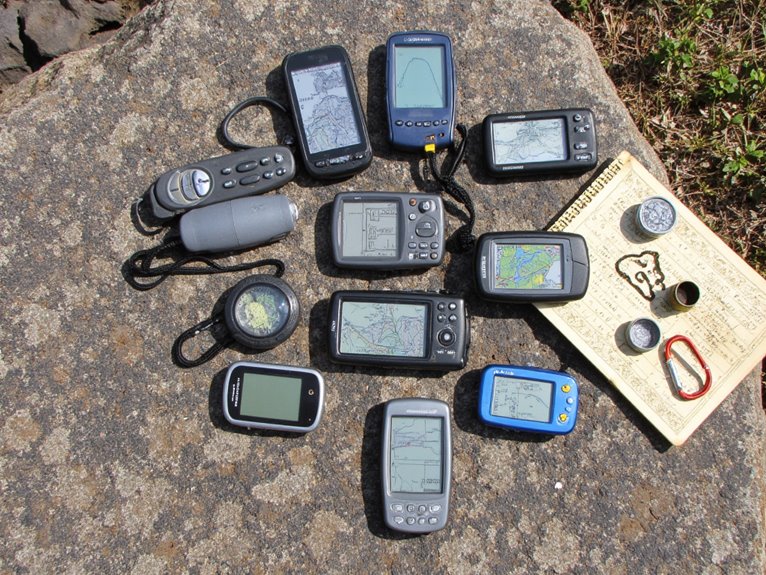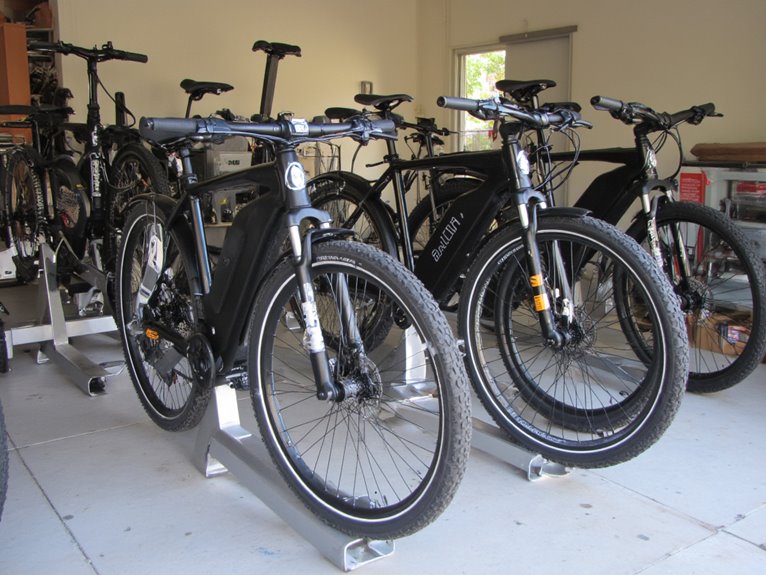Do Sit-In Kayaks Flip Easily?
While sit-in kayaks are designed to be stable and durable, their propensity to flip is largely dependent on a combination of factors. A kayak's design and features, such as its width, volume, and hull shape, play a significant role in its stability. Additionally, the paddler's skill level and experience, as well as the water conditions they encounter, can greatly impact the likelihood of flipping. Proper weight distribution, paddling techniques, and knowledge of water hazards are vital in minimizing the risk of capsizing. As you navigate the world of sit-in kayaking, uncover the essential tips and guidelines to safeguard a safe and enjoyable experience.
We are supported by our audience. When you purchase through links on our site, we may earn an affiliate commission, at no extra cost for you. Learn more. Last update on 7th January 2026 / Images from Amazon Product Advertising API.
Design Features That Matter
In the domain of sit-in kayaks, a handful of design features can make all the difference between a comfortable, enjoyable paddling experience and a miserable one.
A well-designed cockpit, for instance, can provide ample legroom, adjustable footrests, and a comfortable seating system, allowing paddlers to maintain a relaxed posture during extended periods on the water.
Additionally, a kayak's hull shape and chine design can notably impact its tracking and maneuverability, with a rounded hull offering greater stability and a more pronounced chine enhancing responsiveness.
Moreover, features like adjustable thigh braces and ergonomic handles can also contribute to a more comfortable and controlled paddling experience.
Weight Distribution and Stability
As I settle into the cockpit of my sit-in kayak, I'm acutely aware that the distribution of weight and stability are essential considerations that can make or break a successful paddling experience.
A kayak's stability is largely dependent on its hull shape, width, and volume. A wider kayak with a flat bottom and a higher volume will generally be more stable than a narrower one with a V-shaped hull.
Additionally, the paddler's weight distribution plays a pivotal role in maintaining stability. Proper weight distribution involves keeping your center of gravity low and centered, with your feet stretched out in front of you and your body positioned close to the kayak's centerline.
This balanced positioning helps to minimize the likelihood of tipping or flipping, ensuring a safe and enjoyable paddling experience.
Paddling Techniques and Control
With a stable kayak beneath you, the next key element in mastering the art of paddling is developing proficient paddling techniques that enable you to control your kayak's direction and speed.
Proper paddling technique involves using your entire body, not just your arms, to power your strokes. Keep your back straight, engage your core, and use your legs to drive the paddle through the water.
This will help you maintain a steady pace and direction. Additionally, practice switching sides regularly to maintain balance and control.
Water Conditions and Hazards
Rivers, lakes, and coastal waters present a diverse range of water conditions that can profoundly impact your kayaking experience, from tranquil glassy surfaces to turbulent whitewater rapids. Understanding these conditions is vital to paddling safely and avoiding potential hazards.
Some common water conditions and hazards to be aware of include:
- Strong currents: Powerful flows that can sweep you away or pin your kayak
- Rip currents: Narrow channels of fast-moving water that can pull you out to sea
- Whitewater rapids: Turbulent water with waves, holes, and ledges that demand skill and attention
- Underwater obstacles: Submerged rocks, logs, or other hazards that can capsize your kayak
- Weather conditions: Wind, waves, and storms that can quickly change the water environment
In this context, it's essential to stay alert while paddling to ensure a safe and enjoyable experience.
Kayaker's Skill Level and Experience
A kayaker's skill level and experience play a significant role in traversing water conditions and hazards, as a paddler's proficiency directly influences their ability to read the water, make sound judgments, and respond effectively to challenges.
Beginners may struggle to anticipate and react to changing water conditions, making them more susceptible to capsizing.
Experienced paddlers, on the other hand, have developed the skills to predict and adapt to water conditions, reducing their risk of flipping.
As kayakers gain experience, they develop muscle memory, improve their balance, and refine their paddling techniques, allowing them to navigate challenging waters with confidence.
A kayaker's skill level and experience are critical factors in determining their ability to navigate sit-in kayaks safely and efficiently.
Load Capacity and Weight Limits
When selecting a sit-in kayak, it's essential to ponder the load capacity and weight limits to guarantee a safe and enjoyable paddling experience.
Kayakers must factor in not only their own weight but also the weight of their gear, taking into account the kayak's maximum capacity and ideal load distribution.
Weights and Capacities
Kayakers must carefully deliberate the weight capacity of their sit-in kayak, as exceeding the recommended limit can compromise the boat's performance, stability, and safety.
The weight capacity of a kayak is determined by its design, materials, and construction. It's essential to verify the manufacturer's specifications to confirm you're not overloaded.
Some key factors to deliberate:
- Verify the manufacturer's weight capacity rating: Don't rely on estimates or assumptions.
- Take into account the weight of all occupants: Including the kayaker, gear, and any additional accessories.
- Account for additional weight distribution: Guarantee the weight is evenly distributed to maintain stability.
- Don't forget about the weight of the kayak itself: Factor in the boat's weight when calculating the total load.
- Leave some buffer for unexpected situations: It's always better to err on the side of caution.
Load Distribution Matters
Proper load distribution is critical to ensuring the kayak's weight capacity is not exceeded, as uneven weight distribution can lead to stability issues and compromised performance.
When loading your kayak, it's essential to take into account the weight of the paddler, gear, and any additional accessories.
Aim to distribute the weight evenly, with the heaviest items placed closer to the center of the kayak.
This will help maintain balance and stability, reducing the risk of flipping or capsizing.
Be mindful of the kayak's weight limits, and avoid overloading, as this can lead to structural damage or even failure.
Size and Proportion
Kayak manufacturers carefully design and engineer their vessels to accommodate a specific range of paddler weights and gear, providing a safe and enjoyable experience on the water.
In terms of size and proportion, load capacity and weight limits play a vital role.
Key considerations include:
- Load capacity: The maximum weight a kayak can safely carry, including paddler, gear, and accessories.
- Weight distribution: Evenly distributing weight within the kayak to maintain stability and prevent tipping.
- Paddler size and weight: Choosing a kayak that suits your body type and weight range for peak performance.
- Gear and accessory weights: Accounting for the weight of fishing gear, camping equipment, or other items you plan to bring on board.
- Manufacturers' guidelines: Always follow the weight and load capacity guidelines provided by the kayak manufacturer to provide a safe and enjoyable paddling experience.
Maintenance and Inspection Tips
Regular cleaning and inspection of your sit-in kayak are essential to maintain its seaworthiness and guarantee it continues to function at its best over time.
Start by rinsing your kayak with fresh water after each use to remove dirt and debris. Use a soft-bristled brush to scrub away stubborn stains or algae growth.
Inspect the hull for scratches or dings, and apply a protective coating to prevent damage.
Check the cockpit and footwells for debris and clean out any dirt or sand.
Finally, inspect the seat, footrests, and other hardware for signs of wear or damage, and replace them as needed.
Emergency Procedures and Safety
While maintaining your sit-in kayak is vital, knowing what to do in case of an emergency is just as essential, as it can mean the difference between a minor incident and a life-threatening situation.
In the event of an emergency, it's essential to remain calm and follow established protocols.
Always wear a properly fitting life jacket while kayaking.
Carry a first aid kit and know how to use the items in it.
Bring a whistle or other signaling device to signal for help if needed.
Keep a charged phone or two-way radio on hand for emergency calls.
Know your kayak's specific rescue and re-entry procedures.



